When Prof. Lähnemann attended one of our seminars at the university of Würzburg the other day and told us about the Taylor Editions and the possibility to work on one of these edition projects as a part of an internship, I was instantly thrilled. As I had already spent a few months on an edition project about Die Kindheit Jesu of Konrad von Fußesbrunnen, I was keen to gain further experience in working with manuscripts and early printed books and to get a deeper understanding of their medial peculiarities through my participation in the History of the Book seminar.
In this blog post I would like to focus on my last big internship task where I actually had the opportunity to transcribe a complete early editions of one of Luther’s texts by myself and encoded it with XML afterwards. By picking out a few specific issues that have occurred during my work on the copy and explaining how they forced me to think about some fundamental editorial questions I’d like to show exemplary how I’ve been able to develop my editorial skills in some respects.
The text under consideration is an early printed edition of Luther’s Von der Freiheit eines Christenmenschen published in 1522 by the printer Johann Eckhart, based in Speyer. A first impression shows that the printed book is in fairly good condition and relatively well legible.

At a second glance, however, there were a few things that kept me busy a little longer:
A first question that had been occupying me for a while was how to deal with variances in spelling such as the seemingly arbitrary occurrence of infinitive groups written together (hence “zu” and the infinitive form of a verb written together) alongside the variant written separately.

This is only one of several phenomena which are, generally speaking, the result of non-standardised spelling in early New High German. With each of these phenomena I had to ask myself how I should deal with them on an editorial level and how to adequately justify my editorial decisions. As one can imagine this caused a long series of questions:
When transcribing, should I opt for a uniform spelling meaning to write all infinitive group separately as it would be the case in New High German and note this in the footnote apparatus at the beginning? Or should I transcribe the words exactly as they appear in the text and then comment on this peculiarity in the footnote apparatus?
I could easily continue this series of questions, but at this point it already becomes clear what editing work essentially means: the constant weighing up and justifying of editorial possibilities and decisions.
Fortunately, I have always been able to consult my supervisor with questions of this kind as well as some of the already existing online editions of other early printed copies which were often dealing with similar phenomena. Especially the linguistic footnotes of the online edition of Ein Sermon von Ablass und Gnade have helped me a lot in the handling of those irregularities.
Another striking feature of the printed edition that has kept me busy for some time was the inconsistency of the verse boundary markings. In principle, three types of verse boundary markings can be recognised: the colon, the virgule and hybrid, which – as Prof. Lähnemann has noted – could possibly be punctuation markers. As this was the first time I had worked with an early printed book, I had never really been confronted with such issues.
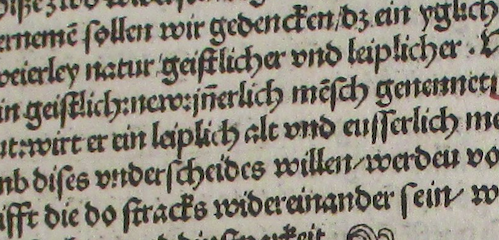
In order to solve the question about the origin of these not clearly classifiable verse boundary markings, one must examine the text in real life. Although a visit to the Stiftsbibliothek Aschaffenburg, the institution that currently holds the early printed book, had to be postponed for the time being due to COVID restrictions, it will certainly be made up for as soon as the situation eases. But even if no definitive answer has been found to this question yet, it should not be missing from this blog post: Questions like these show that there are aspects of text that cannot be adequately represented in a digital version of it and thus demand an examination of its analogue version.
So, generally speaking, phenomena like these have sharpened my awareness that even if a photograph of a text is able to depict almost every facet of the text, an engagement with the analogue text is indispensable for its full exploration and a detailed investigation of its materiality.
One more phenomenon found especially in early printed copies are upside-down letters:
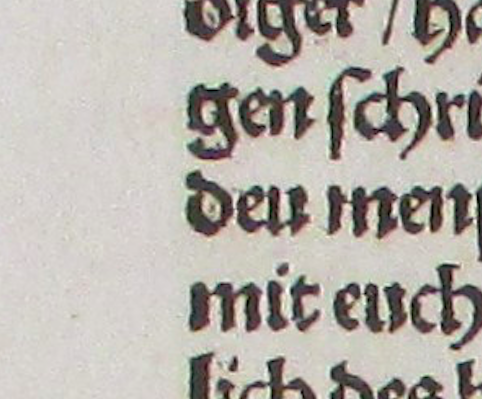
At first, I didn’t really notice these typesetting errors and dismissed them as ink smears. It was only after visiting the Bibliographical Press in the Schola Musicae of the Old Bodleian Library as part of a History of the Book session that I became aware of how quickly these typesetting errors could occur and began to consciously look for them. After we had the opportunity to set a few words ourselves using the classic printing process with movable type, I even honestly began to wonder why these results of brief carelessness were not to be found much more frequently in early printed books.
One last thing, which may not have had the same effect on my editorial understanding, but for the sake of completeness should not be omitted, as it accompanied me throughout my stay (according to the motto: once your attention is drawn to it, you suddenly see it everywhere) and admittedly excited me a bit are the Manicula. By the way, I don’t seem to be alone in this enthusiasm, as these little pointing fingers even have their own hashtag on Twitter. First seen in a History of the Book session, the discovery of these little index finger-shaped marginalia seemed to be a common thread throughout my time at Oxford:
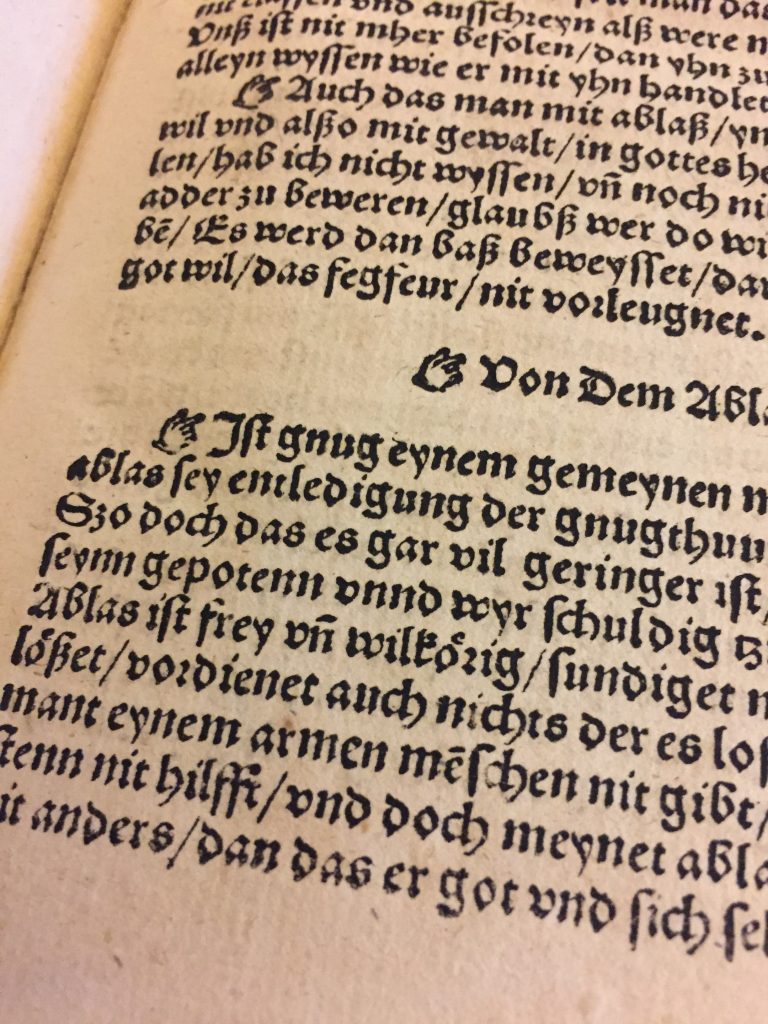
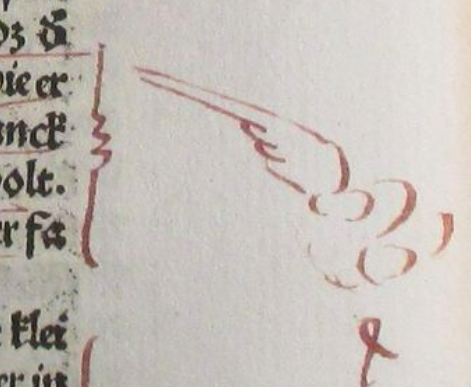
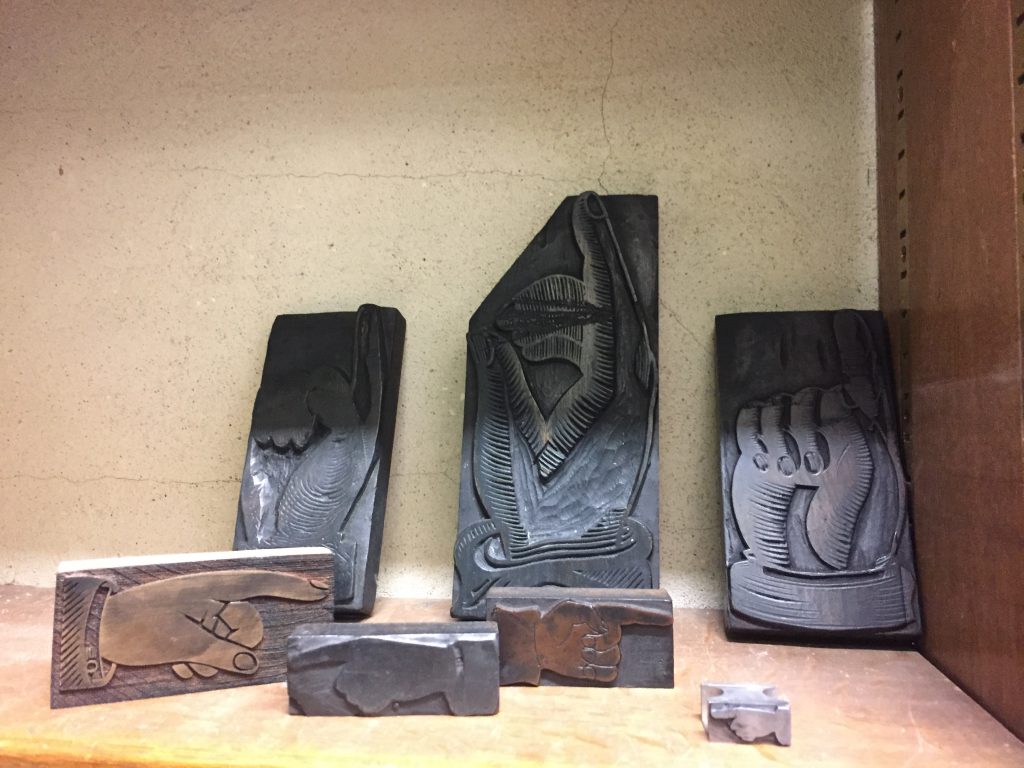
Using these phenomena as examples, I hope to have shown the different ways in which my experiences during the internship have changed my consciousness in the editorial handling of texts. The physical contact with early printed editions, the in-depth study of formal and linguistic irregularities and the opportunity to experience the process of typesetting and letterpress-working myself have given me a much deeper understanding of the medial conditions of early text. These experiences have left me with a much more reflective and critical approach to the medium of text (especially the early printed copies), from which I will certainly profit in my work on possible future editions.